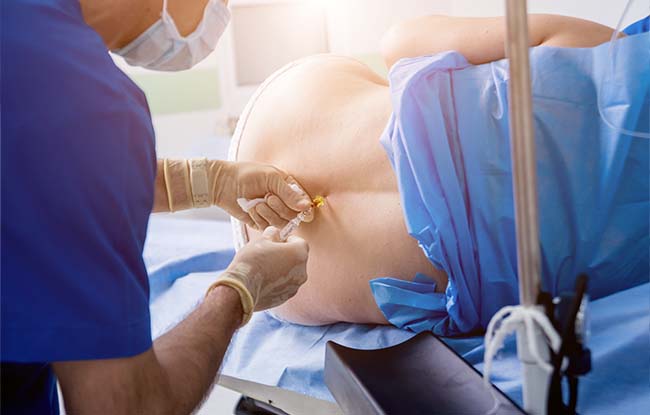Cervical and Thoracic Transforaminal Epidurals
Cervical and Thoracic Transforaminal Epidurals
Pain in any part of the body can disrupt our lives in unimaginable ways. Nobody wishes to experience chronic pain and live with it affecting their health and lifestyle. It impacts daily schedule which can further trigger anxiety and depression. It interferes with your daily activities, such as working, having a social life, and taking care of yourself and others. It becomes difficult to break this cycle. Back and neck pain are quite common due to overuse, strenuous activity, or improper use. There may be many other different causes such as degeneration, abnormal growth, muscle tension, poor muscle tone, etc. Compressed nerves, injury, or damage can also trigger neck, upper back, ribs, abdomen, and lower back pain. If you experience neck or back pain, it shouldn’t be ignored at any cost as it can further worsen your situation over time.

What are the Benefits of Transforaminal Epidural Injections?
Epidural injections have several benefits; they may be temporary or long-term relief. The doctor will recommend a therapeutic approach if you do not find any relief from the injections.
- Reduces inflammation and swelling of spinal nerve roots and other surrounding tissues
- Reduces pain, tingling, numbness, irritation
- Improves your ability to perform daily activities.
- Delays or reduces the need for invasive procedures.
How Does Cervical and Thoracic Transforaminal Epidurals Work?
Many different treatment methods are available to treat neck pain, back pain, shoulder pain, etc. However, treatments like epidural injections are quite common to treat them. For both cervical and thoracic transforaminal epidurals the procedure is similar. The patient must lie face downward and the physician with the help of fluoroscopy guidance will sterilize and inject anesthesia to numb the skin. Then insert a curved needle tip to the appropriate foraminal space near the nerve root in both procedures (cervical and thoracic). When the needle is in place, the doctor will inject a contrasting material to check the correct position. If the spread is confirmed, then the combination of anesthesia and corticosteroids are injected into the region.
It is an anti-inflammatory solution to decrease swelling and pressure. Then the needle is removed, and band aid is put on the area. During the procedure, the patient may experience discomfort or tingling when the needle is inserted into the skin. Also, a mild burning sensation when the medication enters the targeted area. After the procedure is complete, the patient is monitored in the recovery room. With no side-effects the patient can be discharged but must avoid any strenuous activities such as driving, lifting, flying etc. They can slowly resume regular activities and must avoid hot baths or saunas for 2-3 days.
Learn more about the treatment methods and how ReMeDy Medical Group has been helping patients find relief. Schedule an appointment at (650) 306-9490 today.
